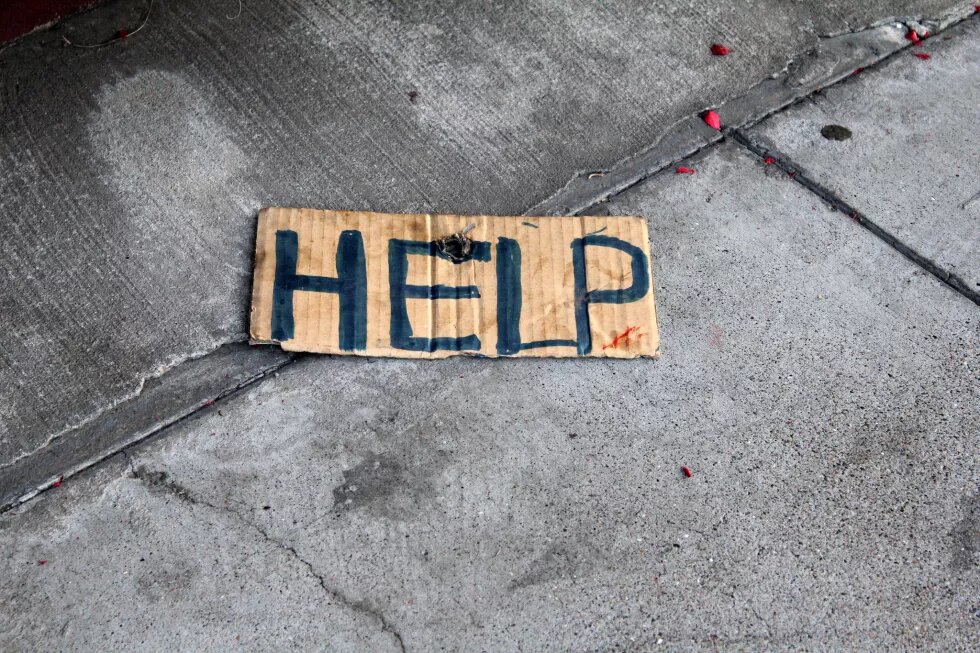A call to "Report violence!" is often heard in messages delivered by various campaigns against domestic violence and violence against women and statements by officials and representatives of women's NGOs. The question, however, is how to go about it.

A call to report violence is intended to encourage victims and those having knowledge about cases of violence, and to send a message that there are institutions and experts to whom any woman suffering violence can turn to. In reality, however, when a victim of violence perpetrated by a husband, a partner, a son or another family member decides to make that first and most important step, there are many questions: To whom can I report violence? Who is responsible? What will be done about it? What will happen after I file a report? What will happen to my children?
If a victim does not know the answers to these and many other questions, she or he hesitates, withdraws and often relinquishes the idea to report. That why it is vital that information on violence reporting procedure and procedures of institutions and civil servants are easily accessible and that procedures prescribed by the new Law on the Prevention of Domestic Violence are applied in all instances, which guarantee that the victim who reports violence will be protected and informed in detail about his/her rights, protection measures and future course of action.
Reporting violence to the police
In the event of violence, the victim (or someone close to the victim) most often calls the police at 192. When reporting violence, the following should be stated: victim's full name and last name, perpetrator's full name and last name, and address of the location where violence is taking place. It should also be stated whether threats were made, whether any weapons were used, whether any physical injuries were inflicted, whether there are/were any witnesses etc. It is important to say whether there is fear for personal safety or safety of children and other family members.
After receiving a call, the police is obligated to go to the scene, stop the violence and protect the victim (the police patrol is obliged to immediately inform the police officer in charge on each act of domestic violence or any immediate threat of violence). So, neither the police patrol nor the police service on duty are in charge of making an assessment in terms of urgency of the situation, and if they do not immediately inform the police officer in charge they are breaking the law.
Upon arrival to the scene, the police patrol will take a statement from the victim without the presence of the perpetrator (mandatory). The police officer/s will ask questions on whether there were other instances of violence before, whether the victim has been hurt, whether violence had been reported before to the police or to the Center for social work, whether the perpetrator had been held accountable before the law, whether he was in jail, whether there is an ongoing separation/divorce process, whether children were exposed to or present at the scene of violence, whether preliminary protection measures or urgent measures were imposed. It is also very important that the woman immediately informs the police if there are issues regarding custody or father's visitation rights, and whether protection measures were already imposed because the police do not have this information in their files.
During the intervention, the police will also take a statement from the perpetrator and other members of the family or witnesses. The police will describe or record the injuries and the space in which violence took place. If the woman sustained injuries, they will call for an ambulance to take the victim to a medical center, or instruct her to go on her own and obtain a medical report on the sustained injuries (a report, not a certificate).
If the perpetrator's mental state has been altered or if he is under the influence of alcohol, he will be admitted to a health facility. Also, the premises will be searched and any weapons found will be removed.
Depending on the safety risk assessment, the police may take the victim to the nearest "safe house".
What happens after the police intervention?
The police patrol is entitled to independently or at the request of the police officer in charge take the suspected perpetrator to the police station.
He will be held eight hours in the police station, where he will give statement in the capacity of a possible perpetrator. If the perpetrator is not taken to the police station (because, for example, he was not found at the scene), the risk assessment will start immediately upon receiving information about violence.
The police officer in charge (not the patrol officer who had responded to the scene, but a special duty officer) may in the period of eight hours recall the victim for another interview. He will assess whether an immediate threat of domestic violence exists. That means that he will assess whether the perpetrator is likely to commit or repeat an act of violence; whether suicide threat/intention is present or danger from the use of weapons; whether there is suspicion of mental illness or substance abuse; whether there is a conflict over custody of a child (children); whether a measure of protection against domestic violence or urgent measure has been imposed against the perpetrator; whether the victim fears that violence will repeated or continued.
In any of these cases, the police officer in charge will issue a written order on urgent measure, regardless of a possible objection by the victim. This way the state will show that it will protect the victim, and the perpetrator will receive a serious warning to stop the violence.
The victim will be informed that the perpetrator had been temporarily removed from the apartment and/or a temporary ban to contact or approach the victim had been imposed.
The perpetrator may refuse the order but the urgent measure will still remain in force for 48 hours. The perpetrator may not file a complaint against the police order. He is obliged to report to the police after 48 hours to be informed as to whether the urgent measure has been extended. This means that the victim should be safe from any influence by the perpetrator for 56 hours, allowing her time to recuperate and obtain all necessary information while the perpetrator is held by the police and while the urgent measure is still in effect. Competent institutions are also allowed time to gather information and decide whether the prosecutor whether the prosecutor will initiate criminal or misdemeanor proceedings.
The public prosecutor may propose extension of the urgent measure by another 30 days and submit that proposal to the court within 24 hours. The court will rule on the proposal within 24 hours without the presence of the perpetrator or the victim. Final decision of the court will be communicated to the victim.


